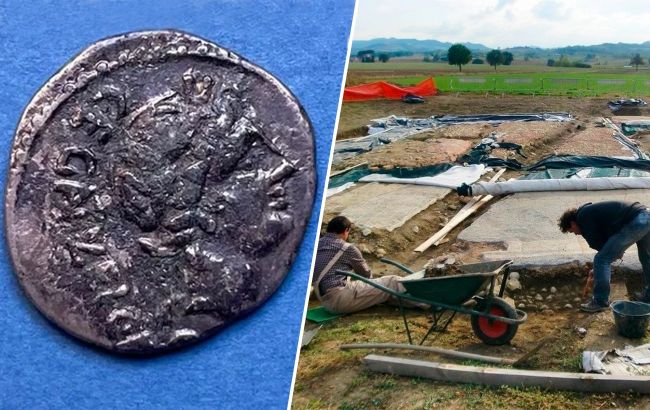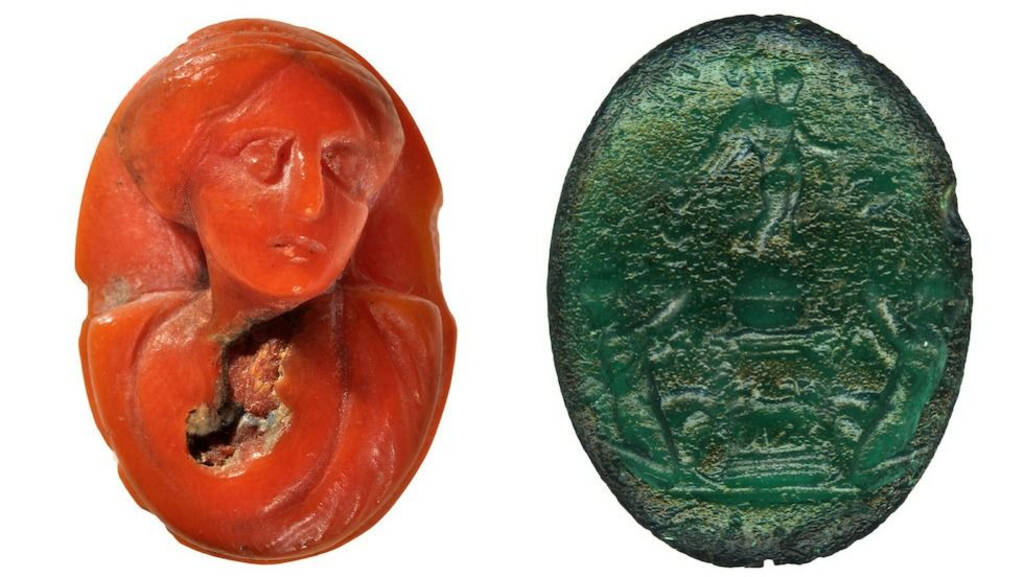Unearthing ancient marvels: Coins and precious gems found in lost Roman city
 In Italy, unique coins and precious stones from the 1st century were found (Collage RBC-Ukraine)
In Italy, unique coins and precious stones from the 1st century were found (Collage RBC-Ukraine)
In northern Italy, at the site of the vanished ancient Roman city of Claterna, archaeologists discovered a real treasure - over 3000 coins and 50 gems, many of which were adorned with depictions of ancient Roman deities.
More details about this discovery and the appearance of the coins are shared by RBC-Ukraine, according to the statement from the Italian Ministry of Culture.
The enormous discovery took place within the area of the vanished city of Claterna, referred to as the Northern Pompeii.
According to the Deputy State Secretary of the Italian Ministry of Culture, Claterna is a magical place. Prior findings on this site revealed a forum, streets, residences with mosaics, and Roman baths. Recently, archaeologists have excavated thousands of silver and bronze coins, along with dozens of precious stones engraved with depictions of deities and architectural events.
Among the uncovered coins is a quinarius—a rare silver coin of the Roman Republic created in 97 BCE. Its discovery helped confirm the age of the structure, dating back to the late 1st century BCE.
The coin intricately depicts a winged victory on a shield resting on trophies, featuring the clear inscription: ROMA. This might indicate the celebration of military victories and a connection to Roman authority.
 Photo: Soprintendenza Bologna
Photo: Soprintendenza Bologna
Experts suggest that Claterna was not merely a Roman city but a place of pilgrimage, a center of trade, and had direct connections to Rome. Within the city, there existed a specialized workshop producing coins and engraved precious stones.
The engraved precious stones depict gods and important structures, including a theater where the quinarius was found. These discoveries will shed more light on the ancient Romans, their culture, religious beliefs, and cultural values.

Photo: Soprintendenza Bologna
Archaeologists plan to continue excavations and restore the theater for future use. Currently, only a tenth of the city's territory has been investigated.
According to some data, Claterna was founded in the early 2nd century BCE. Initially, it was a small settlement that later gained the status of a municipality, eventually growing into a city that became the capital of the area between the Idice and Sillaro streams.
However, like many cities within the Roman Empire, Claterna began to decline during the crisis of the 3rd century. Under the influence of economic and political repercussions of Roman institutions, coupled with invasions by barbarians typical of that era, the place gradually became impoverished and experienced a decrease in population.
Previously, we discussed how archaeologists discovered a mysterious and lost language that existed over 3000 years ago.

